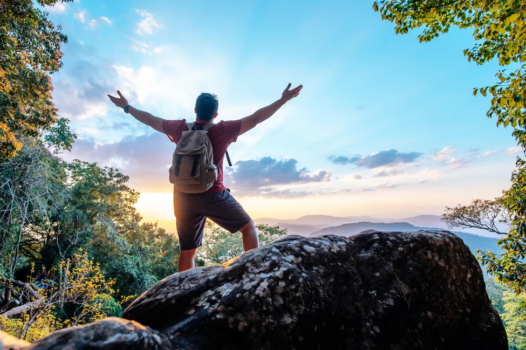The Indigenous cultures of Costa Rica
 Costa Rica’s indigenous history is not as prominent as it is in other Latin American cultures or even others just in . Today, Costa Rica is strongly shaped by its influences as well as Catholicism. But some influences still remain and some tribes are still populating Costa Rica to this day.
Costa Rica’s indigenous history is not as prominent as it is in other Latin American cultures or even others just in . Today, Costa Rica is strongly shaped by its influences as well as Catholicism. But some influences still remain and some tribes are still populating Costa Rica to this day.
Costa Rica has been inhabited as far back as 5000 BC by indigenous . There were many migrations and influences from the Aztecs of Mexico to the Mayas and the Incas of Peru. The was small compared to the vast Pre-Columbian civilizations found throughout Latin America. In fact, some historians argue that the present culture of this was primarily founded upon these more dominant indigenous cultures. You see evidence of the indigenous influences in arts and crafts available throughout Costa Rica in the form of handcrafted ceramics, ornaments, and jewelry.
The most extraordinary and quixotic artifacts left by Costa Rica’s ancestors are the astonishing stone spheres found near Palmar Norte and Palmar Sur in Corcovado. The most prominent are the Bribris, the Borucas, the Cabecares, the Huetares, the Malekus and the Chorotegas. As with most tribes, their numbers are dwindling as their traditions and lands are usurped by modern societies. The few remaining members of these tribes are trying to hold on to their customs and old way of life, although this is getting harder to maintain, and live in small villages in remote regions of the . But luckily, rights for the indigenous have been put on the agenda and tourists can support them by visiting their villages and tribes.
The Discovery of Costa Rica
As the story goes, Christopher Columbus landed on a small island located by Limon in 1502, and “discovered” Costa Rica. Well, that may please historians, but it is not actually what happened in this episode of . In 1502, Christopher Columbus arrived at Limon being lost. Costa Rica already existed. It was here all along and Costa Rica discovered Europeans in 1502! Limon was quickly abandoned in favor of the , however, partially due to the heat and humidity. The indigenous cultures fled to the Talamanca where they remain to this day. In 1522, the colonists named the Costa Rica, meaning Rich in the hope that they were going to find gold in its hills. Which they didn’t. When it became apparent that the rich was poorer than its neighbors, the colonists switched their focus to agricultural development.
Banana and plantations
As the landowners were quite poor and isolated from the centers of Mexico, Guatemala, and the Andes, and because there were very few indigenous labor forces to help, the first Costa Rican soon turned into an autonomous and individual agrarian society. By the beginning of the 19th , the cultivation of bananas brought in a lot of wealth and soon followed.
Progress reveals history: The Guayabo Monument
 While were clearing for plantations in the late 1800’s, they happened upon an archeological site that remains one of Costa Rica‘s most famous ones today. The Guayabo Monument is shrouded in mystery to this day but does reveal the existence of an ancient society of some sophistication. At its peak, around 10.000 used to live in this ancient city. It is believed that the first came to these parts around 1000 BC and had created a bustling city by 800 AD. Why they disappeared is still unknown.
While were clearing for plantations in the late 1800’s, they happened upon an archeological site that remains one of Costa Rica‘s most famous ones today. The Guayabo Monument is shrouded in mystery to this day but does reveal the existence of an ancient society of some sophistication. At its peak, around 10.000 used to live in this ancient city. It is believed that the first came to these parts around 1000 BC and had created a bustling city by 800 AD. Why they disappeared is still unknown.
Costa Rica

The Most important part of Costa Rican History
Achieving Independence was one of the most important events in . Unlike many of its neighbors, however, the Ticos managed to do it without bloodshed or revolution. While this fact is certainly a blessing, it does not mean that it was a simple process. In fact, they had to win their freedom not once but twice! In the first round, they broke free from the rule of Spain. In the second round, they achieved full independence within Central America.
Read more about Costa Rica Independence and the long yet fascinating road Costa Ricans took to get there!
William Walker The Filibuster and Juan Santamaria The Hero
 The freshly earned independence and road to democracy was to receive a couple more blows before reaching stability. The first came in 1855 with the arrival of William Walker. Most of us have heard of self-declared 19th commander William Walker but we don’t always know the details of his relationship to Costa Rica. His ambitions to turn into slaving territory,
The freshly earned independence and road to democracy was to receive a couple more blows before reaching stability. The first came in 1855 with the arrival of William Walker. Most of us have heard of self-declared 19th commander William Walker but we don’t always know the details of his relationship to Costa Rica. His ambitions to turn into slaving territory,
The at the time of William Walker’s arrival, Juan Rafael Mora, brought together a makeshift army of peasants to fight the much more heavily armed enemy. Walker and his army invaded the at the now Santa Rosa and the Costa Rican army expelled and followed them into Rivas, .
Rafael Mora, brought together a makeshift army of peasants to fight the much more heavily armed enemy. Walker and his army invaded the at the now Santa Rosa and the Costa Rican army expelled and followed them into Rivas, .
It is here that the enemy made their mistake; Walker and his army took protection in a wooden fort. The young Juan Santamaria bravely volunteered to burn down the fort.
This act alone turned the young Juan Santamaria into a national hero who is still celebrated annually and even remembered through the name of Alajuela‘s airport: San Juan Santamaria International Airport.
and the Road to Democracy
These events were followed by an era of peace and prosperity until 1917, when fro two years General Federico Tinoco Granados had power as a military dictator. Later in 1948, Jose started a civil war in which 2000 died; the war only lasted 44 days and was the bloodiest event ever to take place in Costa Rica. The victorious junta, however, resulted in a constitution that gave way to free elections with and the total abolition of the army. became a hero when Costa Rica disbanded its army in 1949. Since that day, Costa Rica has been investing in education, natural heritage and developing strategies for supporting
Read our Privacy Policy - Sitemap.
















Follow Us